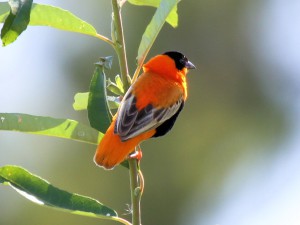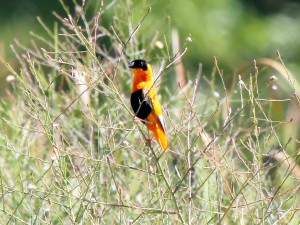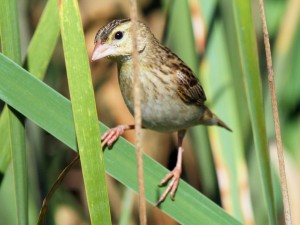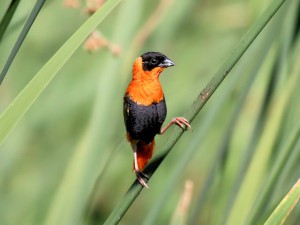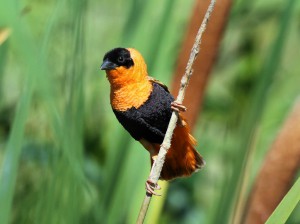Since we recently wrote a post related to the unusual occurrence of a Yellow-crowned Bishop it seemed logical to also address Orange Bishop here too. It is also native to Africa, yet in the case of this species it is already well established and fairly common here in Southern California. This bird is certainly no less striking than the Yellow-crowned Bishop although its behavior is quite different. Fortuitously, Orange Bishop was in the same location along San Diego Creek as the Yellow-crowned Bishop.
Digiscoping Orange Bishop
To see this bird well it is wise to have a scope along. I chose the Kowa TSN-883 spotting scope since it has such a good potential for digiscoping. This bird is very conspicuous but it is also wary. Getting close enough to take more than a distant picture can be difficult. Luckily, since the bird is so vibrant in color it is easy to see at far distances as it perches on the top of the reeds along the stream.
Orange Bishop (Euplectes franciscanus) is also known by a variety of common names including: Northern Red Bishop, Franciscan Bishop, Red Bishop, Grenadier Weaver, Orange Bishop Weaver, Orange Weaver, or West Nile Red Bishop. They are native to Africa above the equator and below the Sahara Desert. Here in the US they have long become established in Southern California. Phoenix, Houston and Florida have more recently also reported populations.
The mature male Orange Bishop is typically bright orange here in Southern California. It can also vary in color to a bright orange red. He is a stocky sparrow size bird with a black face, bill, crown, and waistcoat. His wings are brown to dark gray with white edged feathers. Birders sometimes confuse the female as being a Grasshopper Sparrow. Immatures, and non-breeding males are similar in appearance to the females.

